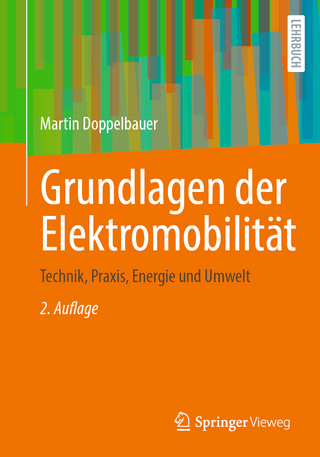
A Geoinformatics Approach to Water Erosion
Springer International Publishing (Verlag)
978-3-030-91538-4 (ISBN)
Degradation of agricultural catchments due to water erosion is a major environmental threat at the global scale, with long-lasting destructive consequences valued at tens of billions of dollars per annum. Eroded soils lead to reduced crop yields and deprived agroecosystem's functioning through, for example, decreased water holding capacity, poor aeration, scarce microbial activity, and loose soil structure. This can result in reduced carbon sequestration, limited nutrient cycling, contamination of water bodies due to eutrophication, low protection from floods and poor attention restoration-consequences that go far beyond the commonly modelled soil loss and deposition budgets.
This book demonstrates, using data from the Harod catchment in northern Israel, how cutting-edge geoinformatics, data science methodologies and soil health indicators can be used to measure, predict, and regulate these major environmental hazards. It shows how these approaches are used to quantify-in timeand space-the effect of water erosion not only on the soil layer, soil minerals, and soil loss, but also on the wide-range of services that agricultural ecosystems might supply for the benefit and well-being of humans. The algorithms described in this book play a major role in this paradigm shift and they include, for example, extraction of photogrammetric DEMs from drone's data, advanced drainage structure calculations, fuzzy process-based modelling and spatial topographic threshold computations, multicriteria analyses and expert-based systems development using analytic hierarchal processes, innovative data-mining and machine learning tools, autocorrelation and interpolation of soil health, physically-based soil evolution models, spatial decision support systems and many more.Tal Svoray is a full professor, the Harry Levy Chair in Geography, and an outgoing Chair of the Geography and Environmental Development Department at Ben-Gurion University of the Negev located in the centre of Israel. Svoray has served as a visiting professor at Cornell University, the French Space Agency (CNES), and the University of Victoria and has published in the international literature over 75 research papers on soil degradation and soil erosion, desertification, ecohydrology, and ecosystem functioning and health. He is the head of the Geographic Information Laboratory and a member of the editorial board of the International Journals: Remote Sensing, PeerJ, and Geomatics.
Dedication.- Preface.- Acknowledgement.- 1. Soil erosion: The general problem.- 1.1 The soil, and its erosion.- 1.2 Scope of soil erosion.- 1.3 A brief history of soil loss.- 1.4 Soil as a finite resource.- 1.5 Summary.- 2 The case of agricultural catchments.- 2.1 Erosion factors in a distinct landform.- 2.2 On-site and off-site consequences.- 2.3 The human agent.- 2.4 Summary.- 3 The physical process.- 3.1 The basics of hillslope erosion.- 3.2 Water Erosion Prediction Project (WEPP).- 3.3 CAESAR-Lisflood a landscape evolution model.- 3.4 Morgan-Morgan-Finney (MMF).- 3.5 Summary.- 4 Spatial variation in the catchment.- 4.1 Discrete spatial units.- 4.2 A suite of continuous variables.- 4.3 Summary.- 5 Earth-based observations.- 5.1 Spectral indices: spectral signatures and mathematical expressions.- 5.2 Classification.- 5.3 Synergy of RS data in catchment models.- 5.4 Close range analysis.- 5.5 Summary.- 6 Predicting erosion risk: from expert knowledge to data mining.- 6.1 The Topographic Threshold.- 6.2 Expert-based systems.- 6.3 The data-mining approach.- 6.4 Fuzzy logic.- 6.5 Summary.- 7 Health of the remaining soil.- 7.1 The soil health index.- 7.2 Statistical analysis and pre-processing.- 7.3 Mapping soil health.- 7.4 Summary.- 8 Decision-making.- 8.1 Decision-making in soil conservation.- 8.2 The simple expert system.- 8.3 GISCAME.- 8.4 Summary.- References.- Index.- Nomenclature.
| Erscheinungsdatum | 23.02.2023 |
|---|---|
| Zusatzinfo | XXII, 349 p. 159 illus., 73 illus. in color. |
| Verlagsort | Cham |
| Sprache | englisch |
| Maße | 178 x 254 mm |
| Gewicht | 706 g |
| Themenwelt | Naturwissenschaften ► Biologie ► Ökologie / Naturschutz |
| Naturwissenschaften ► Geowissenschaften ► Geografie / Kartografie | |
| Naturwissenschaften ► Geowissenschaften ► Geologie | |
| Naturwissenschaften ► Geowissenschaften ► Hydrologie / Ozeanografie | |
| Weitere Fachgebiete ► Land- / Forstwirtschaft / Fischerei | |
| Schlagworte | catchment modeling • GIS and remote sensing • modeling soil erosion • quantifying soil movement • soil conservation management • Soil erosion mapping • soil health index • water erosion |
| ISBN-10 | 3-030-91538-7 / 3030915387 |
| ISBN-13 | 978-3-030-91538-4 / 9783030915384 |
| Zustand | Neuware |
| Informationen gemäß Produktsicherheitsverordnung (GPSR) | |
| Haben Sie eine Frage zum Produkt? |
aus dem Bereich


